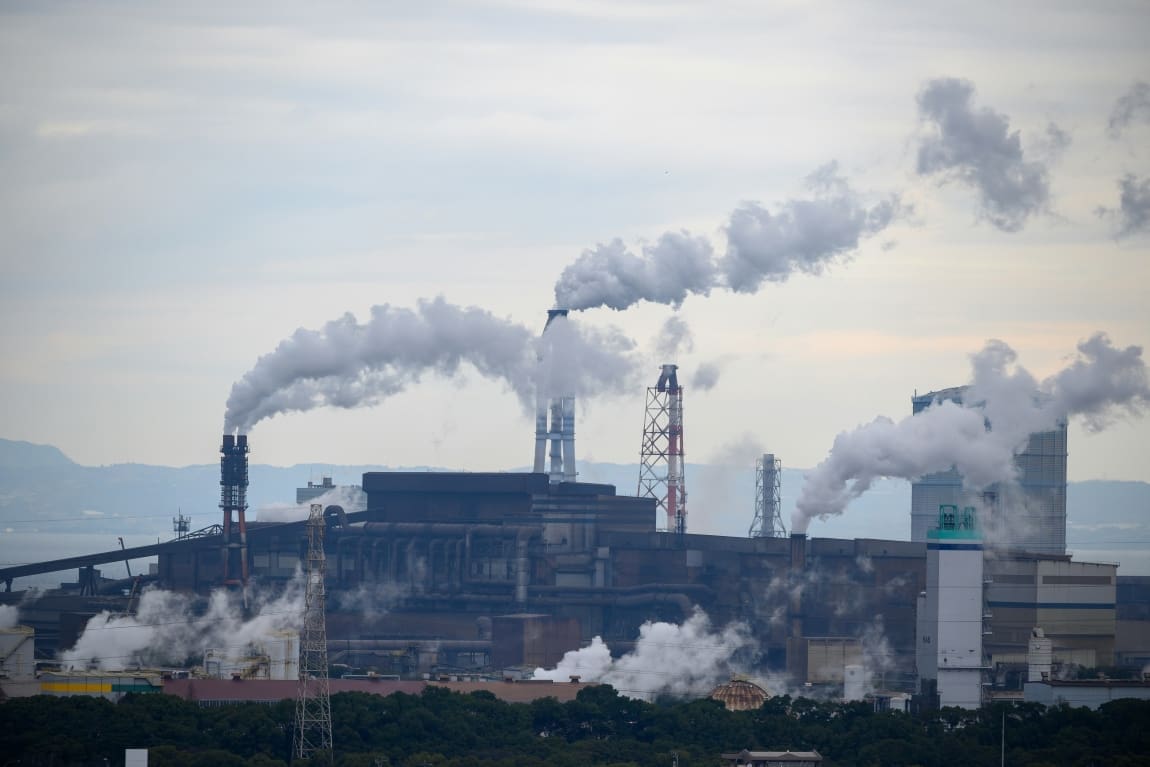When power plants burn fossil fuels at high temperatures, nitrogen and oxygen molecules break apart and then recombine to form a class of compounds called nitrogen oxides, or NOx. These gasses are major pollutants and contribute to—among other things—acid rain and global warming.
One way to curb such emissions is with a catalytic converter, similar to what’s used in a vehicle.
“The catalytic converter injects ammonia into the plant’s emissions stream, and the hydrogen in the ammonia reacts with the oxygen in the NOx, and the products are nitrogen and water molecules, which are nontoxic and have no environmental impact,” says Israel E. Wachs, the G. Whitney Snyder Professor of Chemical and Biomolecular Engineering at Lehigh University and Director of the Operando Molecular Spectroscopy and Catalysis Research Lab.
The process that can convert pollution into benign by-products is called selective catalytic reduction, or SCR. Until now, it has been unclear how this reaction actually occurs, and contradictions have long existed between reaction models within the literature. Wachs and his team used a novel, cutting-edge technology called modulation excitation spectroscopy, or MES, to finally identify the correct pathway.
Their results were recently published in Nature Communications.
“Very few people have this capability at the moment,” says Wachs, referring to MES. “It allowed us to monitor weak signals that were not detectable in the past, and revealed the details of how the reaction proceeded.”
The finding is significant because having the right reaction model can indicate how to modify or redesign the catalytic converter for greater efficiency.
Wachs points out that the methodology is general enough that it can be applied across a range of catalytic reactions, including those emitting NOx from automobiles, ships, tractors, and even riding lawn mowers.
“The products that catalysts manufacture represent 20 to 30 percent of the American economy,” says Wachs. “They’re used to make fuel, chemicals, fertilizers, and even pharmaceuticals. Having the hard data that shows the correct reaction mechanism means we now have the potential to positively impact thousands of catalytic reactions.”
More information: Yong Yin, Bingcheng Luo, Kezhi Li, Benjamin M. Moskowitz, Bar Mosevizky Lis, Israel E. Wachs, Minghui Zhu, Ye Sun, Tianle Zhu & Xiang Li, ‘Plasma-assisted manipulation of vanadia nanoclusters for efficient selective catalytic reduction of NOx’, Nature Communications (15, 3592; 2024); DOI: 10.1038/s41467-024-47878-1. Lehigh University – Press Release. Featured image credit: Kouji Tsuru | Unsplash




